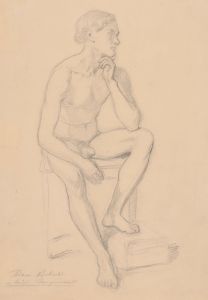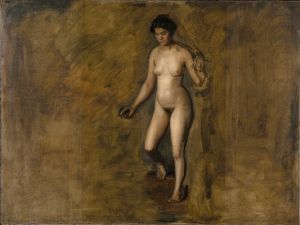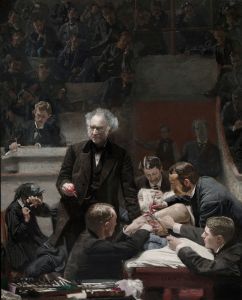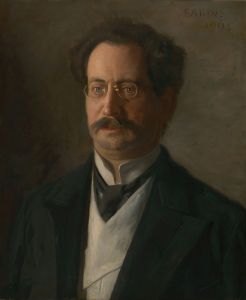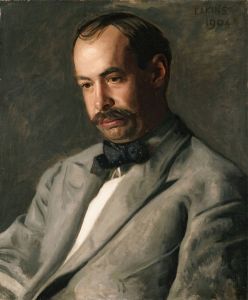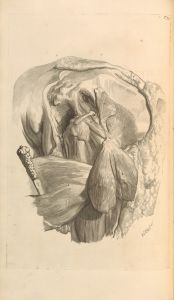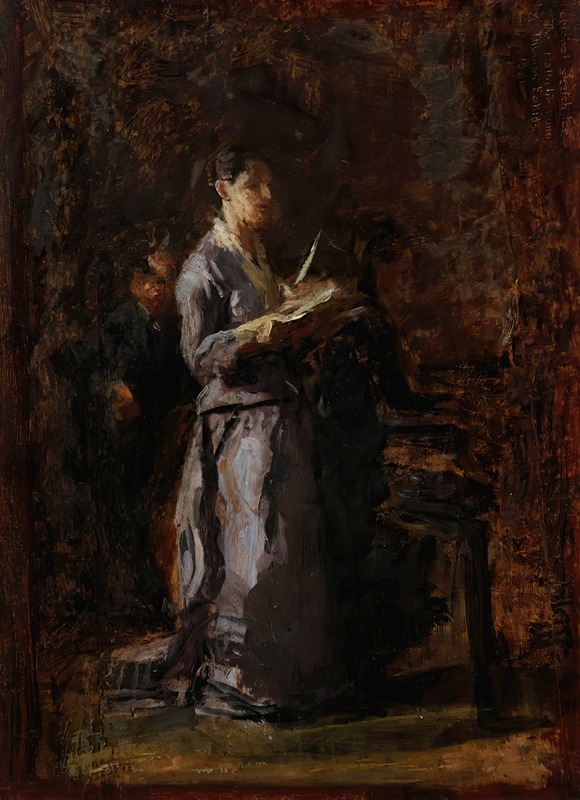
Study for ‘Pathetic Song’
A hand-painted replica of Thomas Eakins’s masterpiece Study for ‘Pathetic Song’, meticulously crafted by professional artists to capture the true essence of the original. Each piece is created with museum-quality canvas and rare mineral pigments, carefully painted by experienced artists with delicate brushstrokes and rich, layered colors to perfectly recreate the texture of the original artwork. Unlike machine-printed reproductions, this hand-painted version brings the painting to life, infused with the artist’s emotions and skill in every stroke. Whether for personal collection or home decoration, it instantly elevates the artistic atmosphere of any space.
Thomas Eakins, an influential American artist known for his realistic portrayal of the human figure and his innovative approach to art, created the painting "Study for ‘Pathetic Song’" as part of his exploration of music and its emotional impact. Eakins, who lived from 1844 to 1916, was a leading figure in American art, particularly noted for his dedication to realism and his interest in the human form.
"Study for ‘Pathetic Song’" is a preparatory work for a larger, more detailed painting that Eakins intended to create. This study reflects Eakins' meticulous approach to composition and his commitment to capturing the nuances of human expression and emotion. The painting depicts a musician, likely a singer or a pianist, engaged in a moment of deep emotional expression, which is characteristic of Eakins' interest in the intersection of art and music.
Eakins was known for his use of live models and his insistence on anatomical accuracy, which he achieved through extensive study and observation. This dedication is evident in "Study for ‘Pathetic Song’," where the figure's posture and expression are rendered with precision and sensitivity. The study likely served as a means for Eakins to experiment with composition, lighting, and the emotional tone he wished to convey in the final work.
Throughout his career, Eakins was deeply influenced by his academic training and his exposure to European art, particularly during his time in Paris, where he studied at the École des Beaux-Arts under Jean-Léon Gérôme. This experience reinforced his commitment to realism and his interest in the human body as a subject of art. Eakins' work often focused on themes of everyday life, sports, and music, reflecting his belief in the importance of depicting contemporary American life with honesty and integrity.
"Study for ‘Pathetic Song’" fits within this broader context of Eakins' oeuvre, highlighting his fascination with the emotional and psychological dimensions of music. Music was a recurring theme in Eakins' work, as he believed it to be a powerful medium for expressing human emotion. This study, therefore, not only serves as a technical exercise but also as an exploration of the emotional resonance of music, a theme that Eakins returned to throughout his career.
Eakins' legacy as an artist is marked by his commitment to realism and his innovative approach to composition and subject matter. His work, including "Study for ‘Pathetic Song’," continues to be celebrated for its technical mastery and its ability to capture the complexity of human emotion. Today, Eakins is regarded as one of the most important American artists of the 19th century, and his contributions to the field of art continue to be studied and appreciated by scholars and art enthusiasts alike.





